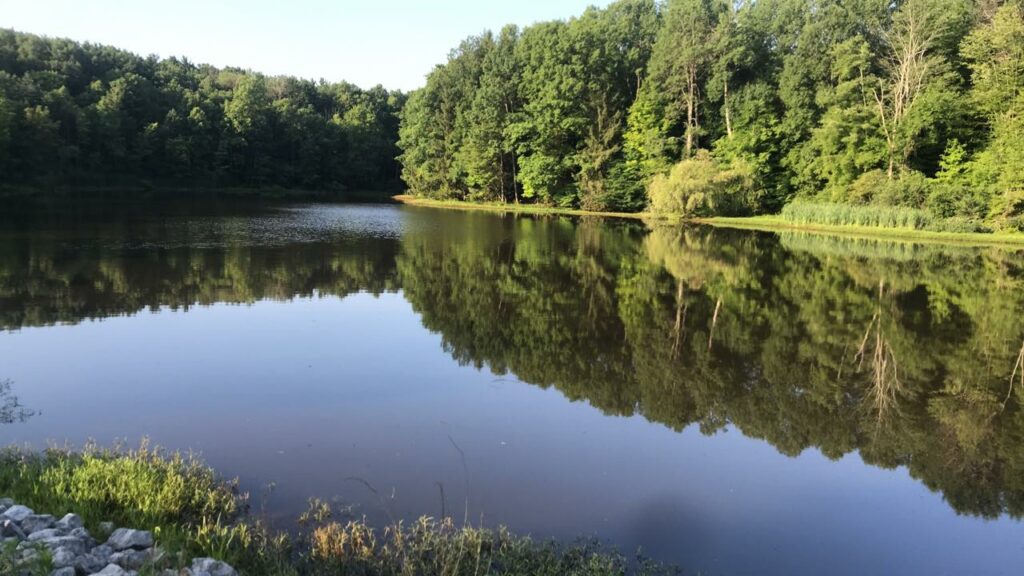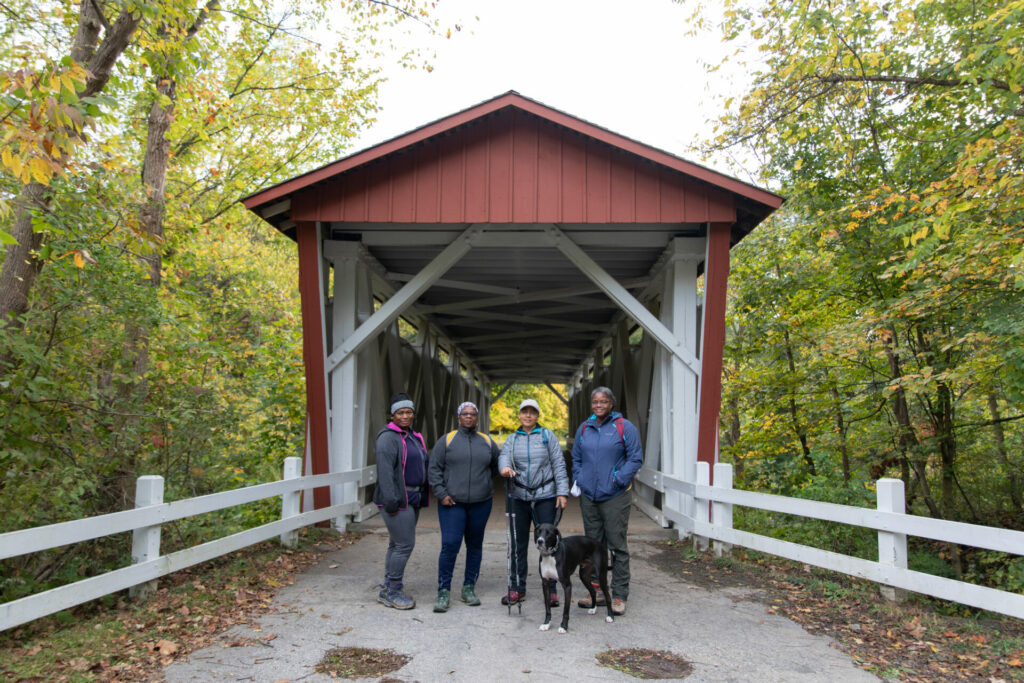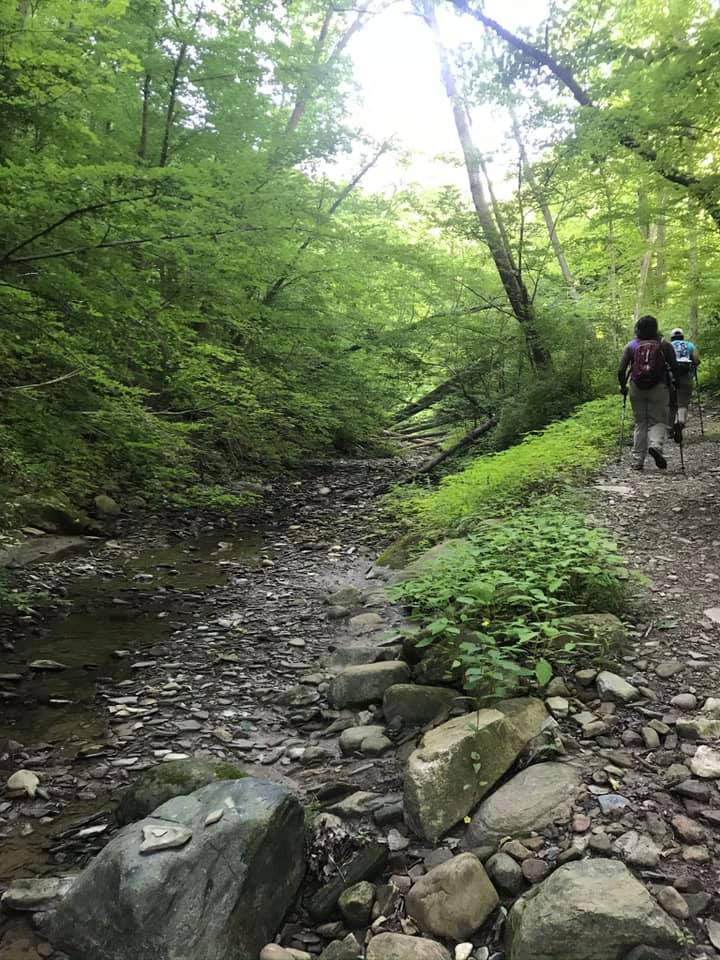Originally written by Kim Smith Woodford for the fall/winter Conservancy Member Magazine
I remember my first visit to a national park in 2010 – it was Yellowstone, home to the Old Faithful geyser. The park presented stunning views at every turn. I traveled with a couple of family members out west to Wyoming where the land of majestic “purple mountains” reside. The time of year was late summer, yet we could see the hints of autumn’s brilliance on the leaves of the forest trees and along the quiet lake. The reflections of the landscape on the water made it difficult to tell where the trees, the sky and the earth meet.
The iconic geyser that I learned about as a student in science class was every bit of spectacular that I had imagined it would be. I marveled at the natural geothermal activity. The hot steam spewing a hundred feet in the air was an amazing sight to see, as were the white-hot pools of water along a series of hot springs with warning signs of “do not touch.” I remember watching kayakers peacefully paddling along the shores of Yellowstone Lake near the hot springs. Seeing them float so gracefully along the calm waters evoked feelings of liberation in my soul.
My first experience with the great outdoors left me wanting more from that space of natural wonder. The sights were too incredible to witness with just a passing glance inside of a tour bus. I became motivated to seek out other national parks. At the time, it didn’t quite occur to me that a national park was right in my backyard.

Years later, not only have I come to know and love the unmistakable beauty of Cuyahoga Valley National Park, but I also have the opportunity to introduce the lush trails, stunning waterfalls, and magnificent Ledges to dozens of African Americans living in Cleveland and Akron. Through my work as a former volunteer leader with Outdoor Afro, and now as founder of Journey on Yonder, or “JOY,” I aim to create a safe space — both literally and figuratively — for the Black community within nature. JOY allows me to facilitate experiences and conversations that help people of color embrace nature’s presence.
My desire to create a space for healthy experiences in nature is rooted in the need for diverse and inclusive representation in the outdoors. Journey on Yonder gives me a chance to collaborate with communities I knew weren’t getting an opportunity to enjoy the outdoors and green space. Time and time again, data has shown people of color visit national parks far less often than other Americans. These numbers are a result of America’s outdoor system being built on an underlying history of oppression. In many cases, legislation segregated people of color away from public lands, like national parks and forests. It has only been a little over 50 years since the 1964 Civil Rights Act was passed, which among other things, granted permission for Black communities to enter public spaces like national and state parks. Prior to that, we were banned from entering.
Although new laws like the Civil Rights Act dismantled legal segregation, generational trauma is what keeps Black people from visiting the natural world. From 1865 to the 1950s, a horrendous amount of lynchings usually took place in forests or natural areas. Our history books have led us to believe that figures such as John Muir were founding fathers of our national parks, but fail to recognize that he was influenced by his own white privilege. His advocacy for nature had an inherent racial bias — even though indigenous people have lived and cared for the land there for thousands of years, Muir wrote that they “seemed to have no right place in the landscape.” Muir’s derogatory comments about Black and Indigenous people carry a heavy weight and continue to alienate those communities.

I believe understanding America’s history can only improve the positive benefits of green spaces to all people. Each time I am out leading a hike, I come upon a random tree or a bush and I am reminded of my African ancestors and their deep relationship with nature. They relied on the natural world for agriculture, shelter and medicinal needs that predates western medicine. I think of George Washington Carver, the first African American to earn a science degree in 1894. This world-renowned American botanist and a lover of nature invented over 300 uses for the peanut and developed methods to prevent soil depletion.
When I am hiking deep in the forests and I see the moss lined along a tree, I think of my hero, Harriet Tubman. The Moses of her time, she was enslaved and escaped only to return to the dangers of the south to help others gain their freedom on what was known as the Underground Railroad.” In her honor, in the month of March, I curated night hikes to honor her bravery and determination to live free of the bondages of enslavement. Her reliance on her God and knowledge of nature cleared her path to freedom.
When I see wildlife along the trails, I think of the happiness I found as a child playing outdoors and spending hours searching for insects and amphibians hiding in murky pools of water. I think of my connection to nature that came by way of working on my family’s vegetable garden. That was the reality of my relationship with the natural world.

The internet and social media have helped highlight voices of diversity in the outdoors and connected thousands of Black and Brown people around the world with environmental passions. Groups like Trail r Us, Outdoor Afro, Latino Outdoors, GirlTrek, See You At The Top, Organic Connects, and Black Environmental Leaders are centered on changing the narrative of the environmental and nature recreation movement through the lens of inclusion and diversity. My participation in the Ohio Certified Volunteer Naturalist and Neighborhood Leadership Institute programs have served to support my goals to create transformative experiences on the trails that will create awareness of the natural world.
I founded Journey on Yonder as a way to share what I discovered nature to be: an antidote to the things we don’t see but feel that are heavy. In return I have found a wonderful community that has inspired me and supported my involvement throughout. It is part of our heritage to be caretakers and respecters of the natural world. Creating a safe and healthy space for people of color to enjoy these places has been my unexpected labor of love.
The Conservancy for CVNP invites you to commemorate Black History with us as we recall stories of our park’s history, honor individuals who helped shape our present and celebrate everyone currently making an impact. Learn more here.





